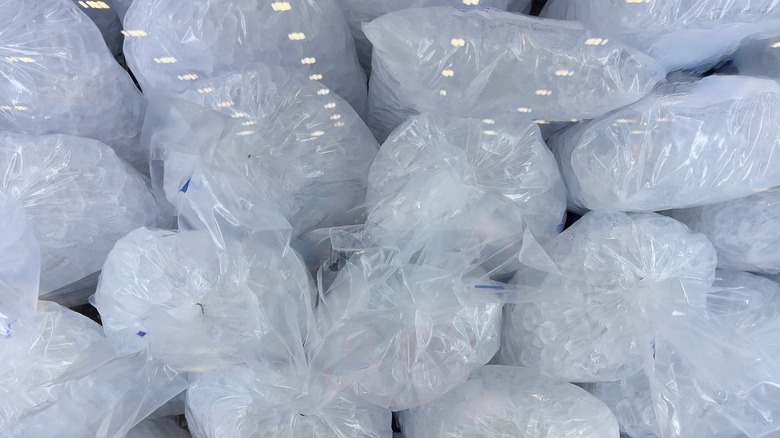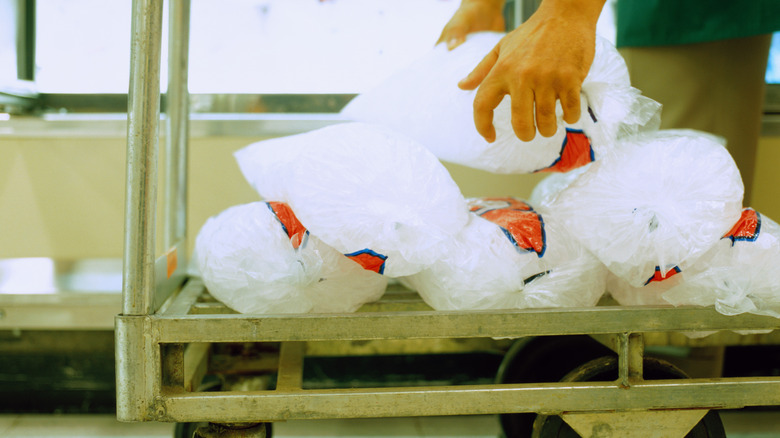Why It's Best To Stay Away From Store-Bought Bagged Ice
We may receive a commission on purchases made from links.
Americans' love affair with ice began in the 1800s, and today bagged ice is readily available in grocery stores, gas stations, and convenience stores. Although ice is classified as a food by the United States Food and Drug Administration (FDA), packaged ice is regulated based on where it is produced and sold, which means that some store-bought bagged ice is not subject to FDA inspection. Instead, states regulate in-store ice producers. One bagged ice myth is that it is contaminant-free because ice is frozen. In fact, according to the International Packaged Ice Association (IPIA), some bacteria can survive on ice.
Scientists agree. A 2017 study published in the Journal of Food Protection found that there was a difference in bagged ice contamination levels that was associated with how the ice was packaged. In this study, researchers found Staphylococci bacteria on 34% of ice samples that were packaged on-site at a retail establishment. No Staphylococci were found on ice samples produced via the in-store bagger process, where a machine does the bagging, or on ice samples that were produced by a large-scale ice manufacturer, where the entire ice-making process is automated.
Similarly, 10% of on-site packaged ice samples contained coliforms, while none of the manufactured or in-store bagger-produced ice samples did. In 2004, the International Journal of Food Microbiology published a study that examined 23 ice samples from Brazilian ice factories, fish markets, and open air markets. The researchers found 50 E. coli specimens, 12 of which were potential diarrhea-causing E. coli varieties. They concluded that ice made from contaminated water could spread diseases.
How to pick the safest bagged ice
According to a 2017 study published in the Journal of Water and Health, ice can be contaminated in several ways. For one, ice made from tainted water could become a vehicle for spreading disease. And if ice machines are not cleaned and maintained at proper intervals, bacteria can spread from ice machine surfaces to ice cubes. Poor employee hygiene can also play a role in contaminating ice. To reduce the possibility of adulterating ice, the researchers recommended testing ice samples regularly, cleaning and maintaining all machinery, equipment, water storage tanks, and water lines on a prescribed schedule, and training employees in proper personal hygiene. If you must use store-bought bagged ice, try to find out where the ice was made and bagged.
Large-scale ice manufacturers who are IPIA members adhere to rigorous safety standards that include ensuring water purity, cleaning and sanitizing equipment and production areas, and testing ice for bacterial contamination. You'll see the IPIA logo on bagged ice processed using these standards. Also, opt for machine-bagged ice over manually-bagged ice. Bagging machines automate the bagging process so that humans do not touch the ice cubes. Of course, people still have to load and unload the bagged ice, and you can't know whether or not they practiced good hygiene before doing so. Consider cleaning the outside of the bag with an antibacterial wipe before you open it. In addition, always properly wash your own hands and make sure that the ice bucket or ice chest you use are clean, too.

